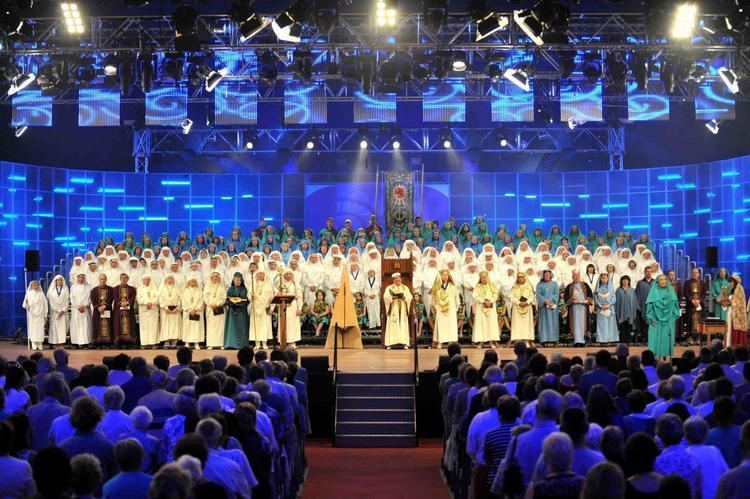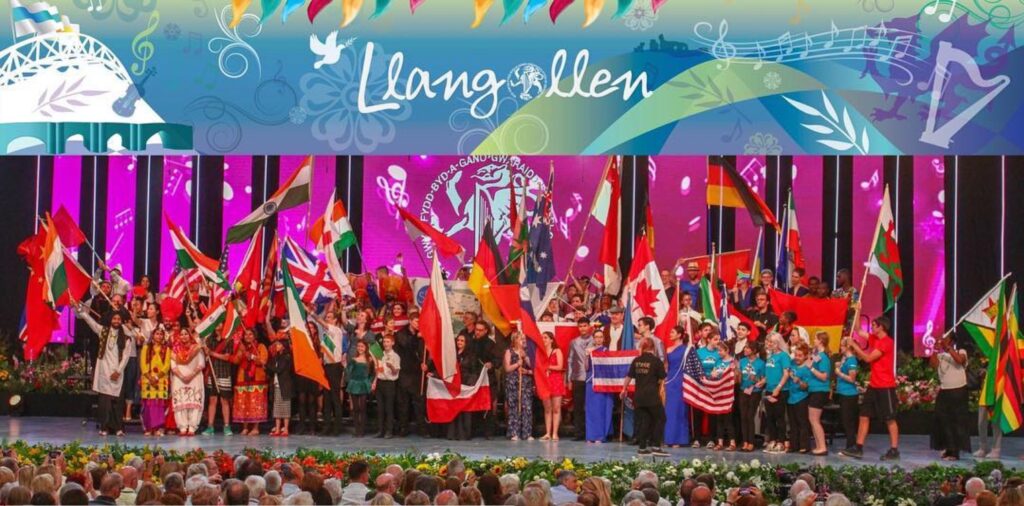National Eisteddfod of Wales
TRADITIONALLY held during the first week of August every year, the National Eisteddfod is a celebration of the culture and language in Wales.
The festival travels from place to place, alternating between north and south Wales, attracting around 150,000 visitors and over 250 tradestands and stalls.
The Eisteddfod is the natural showcase for music, dance, visual arts, literature, original perfomances and much more. Encompassing all aspects of the arts and culture in Wales, it is an inclusive and welcoming festival, which attracts thousands of Welsh learners and those who do not speak the language as well as Welsh speakers every year.
Traditionally a competition-based festival, attracting over 6,000 competitors every year, the festival has developed and evolved over recent years, and whilst the competitions form the central focus for the week, the Maes (site) itself has grown and developed into a vibrant festival with hundreds of events and activities for the whole family.

The history of the Eisteddfod in Wales can be traced back to 1176, with the modern history of the organisation dating back to 1861. The festival has been held every year until 2020, other than 1914, when the outbreak of the First World War saw it postponed for a year.
The National Eisteddfod’s Management Board announced in March that the 2020 National Eisteddfod, due to have been staged in Ceredigion, would have to be postponed until the following year as a result of the coronavirus pandemic.
The Urdd Eisteddfod, an annual Welsh-language youth festival of literature, music and performing arts organised by Urdd Gobaith Cymru, was also forced to postpone its week-long festival, due to have been held in Denbighshire, by 12 months.
Described as Wales’ leading mobile regeneration project, national Eisteddfod week is the highlight of a two-year community project, bringing together people of all ages and backgrounds from a different part of Wales every year.
With a mix of outreach work, lifelong learning and volunteering opportunities, the community project steers the preparations for the festival, giving local people a chance to make their mark on the national festival.
Most of Wales’s leading writers, musicians and poets have competed at the Eisteddfod, with many performers appearing on a national stage for the first time during the festival.
The tradition of such a meeting of Welsh artists dates back to at least the 12th Century, when a festival of poetry and music was held by Rhys ap Gruffydd of Deheubarth at his court in Cardigan in 1176. A chair at the Lord’s table was awarded to the best poet and musician, a tradition that prevails in the modern day National Eisteddfod.
The current format owes much to an 18th-Century revival arising out of a number of informal eisteddfodau. Poets would often gather in taverns and open spaces and have ‘assemblies of rhymers’, meetings which kept traditions alive.
Winners even still received a chair, which was a prized award because of its perceived social status. Throughout the medieval period, high-backed chairs with arm rests were reserved for royalty and high-status leaders in military, religious and civic affairs. As most ordinary people sat on stools until the 1700s, an armchair conveyed status to a winning bard. The earliest known surviving Bardic chair made specifically for an Eisteddfod was built in Carmarthen in 1819.
The first true National Eisteddfod organised by the National Eisteddfod Council was held in Denbigh in 1860 on a pattern that continues to the present day.
The National Eisteddfod of Wales, the largest festival of competitive music and poetry in Europe, is made up of eight days of competitions and performances, entirely in the Welsh language and traditionally staged in the first week of August.
Another important eisteddfod in the calendar is Eisteddfod Yr Urdd or the Youth Eisteddfod. The Urdd Eisteddfod involves Welsh children in a week of competition in singing, recitation, dancing, acting and musicianship during the summer half-term school holiday. With the establishment of the Urdd headquarters in the Wales Millennium Centre, the eisteddfod will return to Cardiff every four years.
An International Eisteddfod is held annually in Llangollen, Denbighshire. Choirs, singing groups, folk dancers and other groups attend during July from all over the world, sharing their national folk traditions in one of the world’s great festivals of the arts.

Other smaller-scale local eisteddfodau are held throughout Wales. Meanwhile, Welsh emigration, particularly during the heyday of the British Empire and British industrial revolution, led to the foundation of formal and informal Welsh communities internationally. Among the traditions that travelled with these émigrés was the eisteddfod, some of which – in a variety of forms and languages – still exist.
Eisteddfodau have been held since the initial Welsh settlement in Argentina in the late 19th Century and have also been adopted into Australian and North American cultures. The largest US eisteddfod, featuring visiting Welsh choirs, was held in 1893 at the World Columbian Exposition in Chicago.